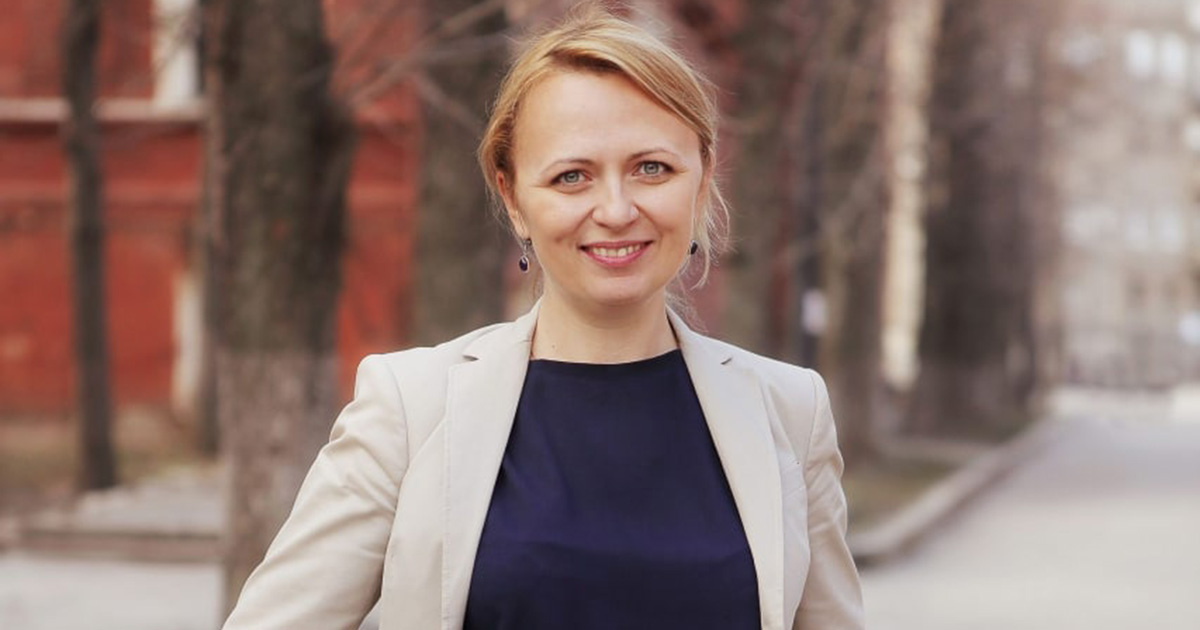“Ideas are worth sharing,” Lydiia Paschuk, President of K.FUND
30 March, 2021
On March 20, the online intensive of the Academy for Women Entrepreneurs Inspiring Women 2020-2021 took place. One of the trainers and mentors of the event was the president of the Vasyl Khmelnytsky Foundation K.FUND, the head of the Small and Medium Entrepreneurship School Lydiia Paschuk. She shared tips on how to create a successful business model.
We publish abstracts from the first day of the intensive training day.
What is a business model?
A business model is how a company creates, communicates, and retains value. Today, in the face of a new constantly changing reality, there is a need for new business models. Even 30 years ago, it was difficult to imagine that today there will be successful business models for Alibaba and Amazon. Uber also has an interesting and successful business model. These models are completely different but equally successful in the market.
Uber has an interesting business model: the company provides taxi services but does not have its own cars. The situation is similar to the short-term accommodation service Airbnb because they do not have properties. The world’s largest phone companies Skype and WeChat don’t have their own equipment, and the world’s fastest-growing bank, SocietyOne, has no money.
All of these businesses are successful because of their business models that disrupt traditional markets.
How does a startup evolve?
Before you form your business model, you should make sure that you have a sound business idea, concept, and a minimum viable product (MVP).
In the Ukrainian mentality, it is not customary to share your ideas with other people – we are afraid that someone will jinx or steal our thoughts. But this is wrong: ideas are worth sharing with others, so you will see if there is a demand for them and if they generate interest.
Read more about startup evolution here.
By the way, according to 2021 statistics, in the United States, 18.7% of citizens are entrepreneurs. In Ukraine, this is only 4%, so we have room to grow. What we are doing well: if at the end of the 1990s there were 27 enterprises (economic entities) per 10,000 Ukrainians, now there are 80.
What is Business Model Canvas?
One of the tools for building business models is the Business Model Canvas, a tool for describing business models that were created by Alexander Osterwalder and Yves Pigneur. It includes 9 blocks, interconnected by components.
- Value Proposition — which value do you offer to the market, what is your product or service. In this block, it is worth focusing on the main MVP, for example. There is no need to go into details, they can change.
- Customer segments — who are the customers, give general groups of these target segments.
- Customer Relationships — how will you reach, attract, retain, build customer loyalty?
- Channels — how will consumers know about you (communication) and how will you deliver products (distribution)?
- Key actions — how to reach consumers and make a profit? What are the steps to implement a business model?
- Key resources — what is needed for a successful business model to function? It can be funds, personnel, equipment, raw materials, knowledge.
- Key partners — potential and current partners of the startup, which organizations, individuals are ready to influence positively, or are they already involved in the project?
- Cost structure — for events, purchases, funds will be spent, how much is needed to operate the project, launch a startup, and the like.
- Sources or Streams of Income — where are the funds expected or coming from that make this model a business model? I often like to ask startups where the money is in their projects. Unfortunately, I can’t always get an answer. Therefore, I advise you to especially think about this block, and not wave your hand, they say, then everything will be.
You can apply the canvas of a business model many times, developing various options for business models, and also finalize the project at least every day, simply by hanging printouts of the canvas on the wall and “playing” with stickers to fill the blocks. Whom it is more convenient. The business model canvas is a good strategy tool, but tactics require more detailed elaboration, you still need to have a specific description of each of the blocks. A detailed budget for the project will be required and a marketing and distribution system developed as well as revenue streams and an action plan.








